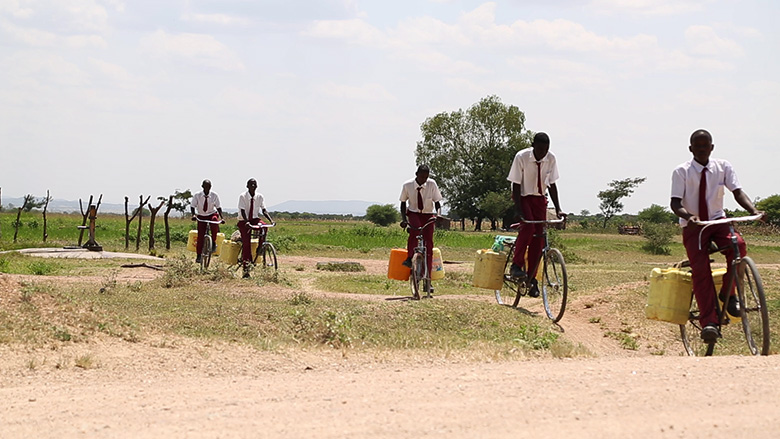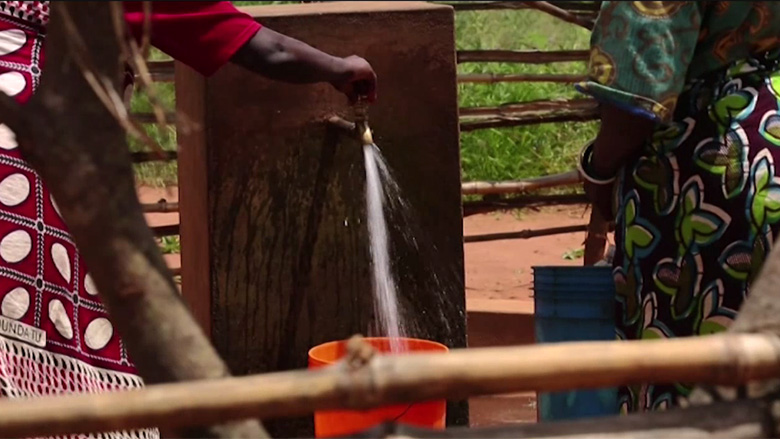NGUDU, September 8, 2015 – For Boaz Pius, there was no job more alienating than being the district water engineer for an urban area that had access to water for just three hours a day – or not at all.
“You never went through a single day without hearing people everywhere you went complaining about the water situation,” said Pius. “This is how it was from when I first reported here for work in 2006.”
Pius said sometimes the town’s water systems failed completely, leaving people in the capital of the Kwimba District without running water for days. As one of the largest areas of cotton production, contributing as much as Sh1.9bn in revenues, residents felt entitled to a little more than fleeting moments of the low-pressure water supply they were getting.
“The water was sourced from six boreholes constructed by the British in 1950,” Pius said. “But the town’s population has grown and the infrastructure was weakened and suffered a lot of leakages.”
In July 2014, the town’s residents turned out to witness the inauguration of the new piped system connecting them to the larger Kahama-Shinyanga Water Supply Authority (KASHWASA) which allows for as many as 700 home connections compared to the original 450. Since the new connection, residents are enjoying 10 to 14 hours a day of uninterrupted water supply to all wards at the same time, as opposed to the previous rationing system. As many as 65,000 people in 21 villages were also served.
“The provision of effective and sustainable urban water supply is still challenging, as it requires balanced attention to investments as well as systems for ensuring institutional efficiency,” said Yitbarek Tessema, World Bank’s lead water and sanitation specialist. “This is what the WSDP is striving to achieve across the country.”
According to Government of Tanzania, the urban component of its Water Sector Development Program (2007-2016) has facilitated the connection of 236,541 customers to water supplies, and built 549 water collection points, providing a total 2.7 million urban residents with clean and safe water by June 2014. The World Bank and several development partners contribute to this multi-stakeholder program designed in a Sector Wide Approach (SWAp).
Ngudu High School, with 881 students and 49 teachers, is one of the many institutions that now has access to water.
“When the service arrived at our school it was an incredible moment,” said John Kimasa who heads the school. “Each day, two classes would lose two hours of studies as they were required to go and fetch water for the school from the nearby district prison. Teachers and students would agree on how to make up for lost time during the after-hours and this was a big problem but we had to ensure we covered the syllabus on time. We are happy the school now has its own permanent connection together with storage should there be any system breakdown.”
Kimasa said it wasn’t just the children who suffered without access to water, but teachers too.
“Without water at your home, it is hard for anyone to concentrate on the job at hand,” said Kimasa, who noted that lack of water access made it difficult to attract qualified teachers to the high school. “But since the new connection, our teachers are more motivated. We still have a deficit of five teachers, but we expect that when the government assigns them, they will not hesitate to join now.”
A multi-tap public kiosk provided to serve those who cannot afford home connections, is hardly attracting any traffic as Ngudu residents, freshly motivated by the regular water supply, prefer to pay for home connections at Sh300,000 per unit.
“We expect that the consumption will continue to grow as the people have now witnessed the delivery of service,” said Pius. “Typically, people’s consumption of water changes as they have access to more water. Their habits change. We are indeed seeing that even those who have connected just recently are starting to use more water as they get accustomed to the convenient supply within their own homes.”
Pius, who is also the acting District Executive Director, is optimistic that the residents’ willingness to pay their water bills and for home connections will also be exemplified in other areas, having a positive impact on the district’s coffers.
“We expect to get more attractive and significant as a district now that we have water,” he said. “If you add the electricity that is currently being implemented, then we will be very far in a very few years to come.”


